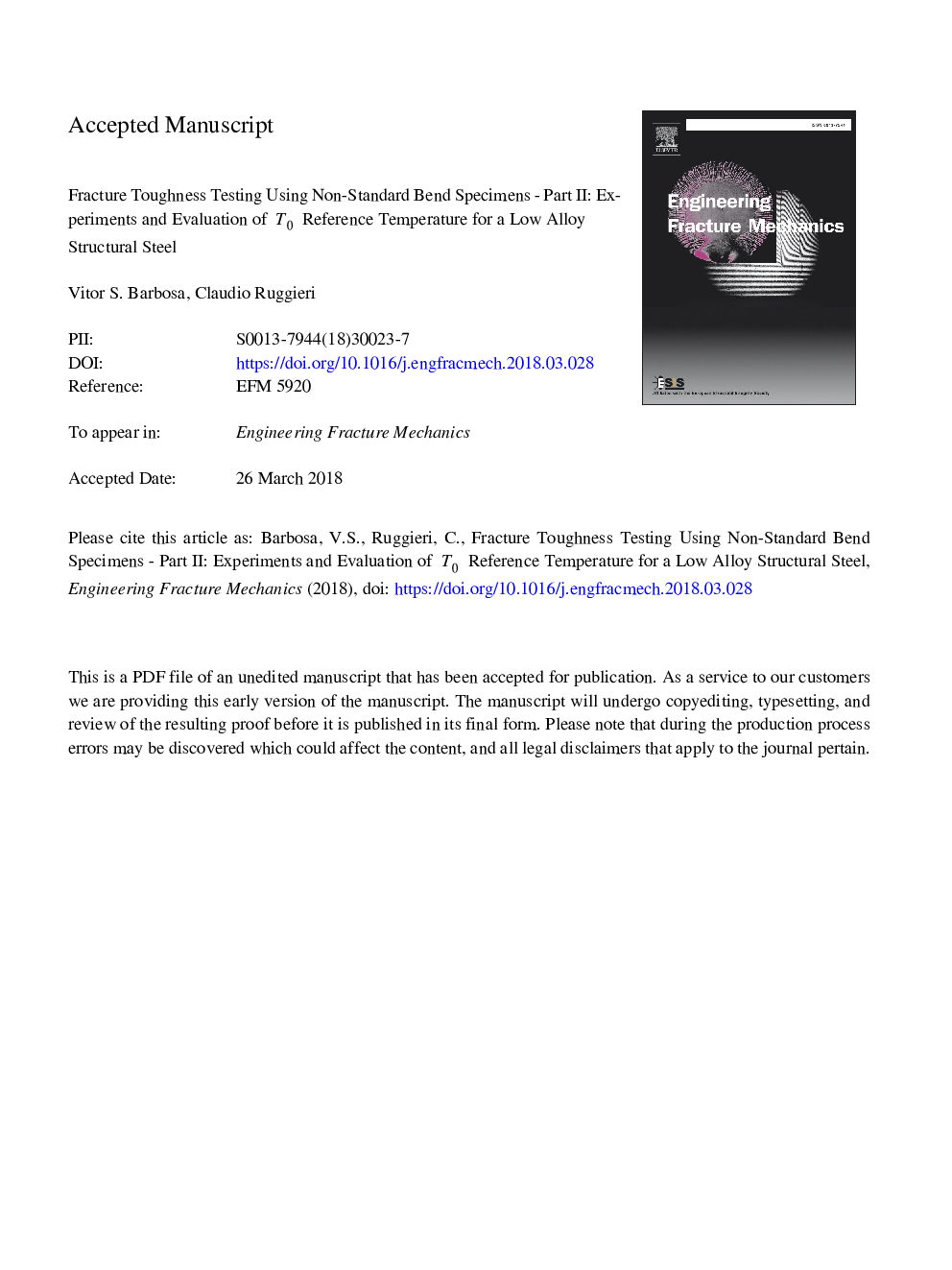| Article ID | Journal | Published Year | Pages | File Type |
|---|---|---|---|---|
| 7168861 | Engineering Fracture Mechanics | 2018 | 38 Pages |
Abstract
The present study addresses an experimental investigation of the effects of geometry and loading mode on the cleavage fracture behavior of a high strength, low alloy structural steel using standard and non-standard SE(B) specimens, including a non-standard PCVN configuration. Fracture toughness testing conducted on various bend specimen geometries extracted from an A572 Grade 50 steel plate provides the cleavage fracture resistance data in terms of the J-integral at cleavage instability, Jc. The experimental results show a potential effect of specimen geometry and loading mode on Jc-values which can help mitigating the effects of constraint loss often observed in smaller fracture specimens. An exploratory application to determine the reference temperature, T0, derived from the Master Curve methodology (which defines the dependence of fracture toughness with temperature for the tested material) also provides additional support for using non-standard bend specimens in routine fracture applications.
Related Topics
Physical Sciences and Engineering
Engineering
Mechanical Engineering
Authors
Vitor S. Barbosa, Claudio Ruggieri,
